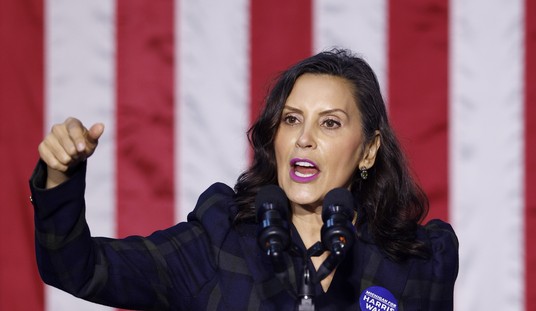We already knew the number of sign-ups on Healthcare.gov for November — 100,000 or so — but the number from the state exchanges was a mystery. In October, the states signed up roughly three times as many people as the feds did, thanks to the fact that their websites were relatively functional. If that trend held in November, it would have meant 300,000 new sign-ups on top of the 100K that Healthcare.gov delivered. Per today’s HHS report, the trend … did not hold. The states banked roughly 150,000 new sign-ups last month, not quite double what they did in October.
HHS’s target, by the way, was 800,000 total enrollments through November 30th. They made it less than 50 percent of the way. But that brings us to a new mystery: How far short of 50 percent did they actually fall? As usual, they’re being slippery about it.
Adding a caveat, HHS noted that it is trying to correct a problem that may have resulted in some of the signups being counted twice, thus potentially overstating the number…
Individuals have until Dec. 23 to pick plans and until Dec. 31 to pay premiums for policies that go into effect on Jan. 1. By that time the administration had originally projected 3.3 million Americans would enroll in insurance through the exchanges, according to an internal HHS document unearthed by the Associated Press.
That means more than 2.9 million signups are required for December to catch up to the original target pace, an ambitious goal even assuming a better-functioning website, a stepped-up outreach effort and lot of Americans waiting until the last minute to decide on a plan.
Three huge caveats to the 365,000 figure. One: As Phil Klein notes in the excerpt, by HHS’s own admission, some of them are duplicates. And the fact that they felt obliged to admit that in a report that they’re desperately trying to spin as good news suggests that “some” isn’t an insignificant number. Two: As you hopefully already understand, “sign-ups” aren’t the same as “enrollments.” HHS’s original targets for O-Care were based on the assumption that people would be fully enrolled with their new insurers and ready to go with coverage on January 1. But because they’re desperate for positive publicity, they tweaked that metric so that anyone who’s tried to sign up and gotten as far as choosing a plan, even if they haven’t actually purchased it yet, counts in terms of them hitting their target. The actual number of people who’ve enrolled, not just “signed up,” is a well-kept secret. Three: As you also know by now, even if you’ve pulled the trigger on a plan and enrolled with an insurance company, your enrollment isn’t valid until you’ve paid your first month of premiums. There’s big news about that today but it really deserves its own post, so stay tuned. For the meantime, it’s enough to say that if you discount the number of duplicates, the number of people who haven’t actually completed enrollment on the website yet, and the number who haven’t paid their premiums, you’re looking at some fraction — probably a small one — of 365,000 who’ve really, truly, honestly enrolled in ObamaCare and have their coverage already in place for January 1.
As for the million-dollar question, whether the exchanges are drawing enough healthy young people to offset the cost of the chronically ill, HHS won’t say. That’s actually better evidence that this boondoggle is in deep trouble, I think, than the fact that they’re way off their target enrollment number. Lefties like Ezra Klein have been comforting their readers with reminders that the overall number of sign-ups is less important than having a sustainable risk pool of whatever size. And that’s true: Even if the numbers are underwhelming, having a healthy mix of “young invincibles” to help cover the sick in each exchange would make the system viable. From there, the feds could work on expanding the size in years to come. You can imagine, then, how ecstatic Sebelius and her team would be if the early data confirmed that the risk pools were looking good despite being smaller than expected. They’d be leading with that information, with the number of enrollments just a footnote to the really important news. The fact that they’re not only not leading with it but don’t want to talk about the demographics tells you all you need to know about how they’re doing right now.
Exit question: Several million people in the individual market have had their old insurance canceled. How many of them have re-enrolled in a new plan? We don’t know that number either.








Join the conversation as a VIP Member